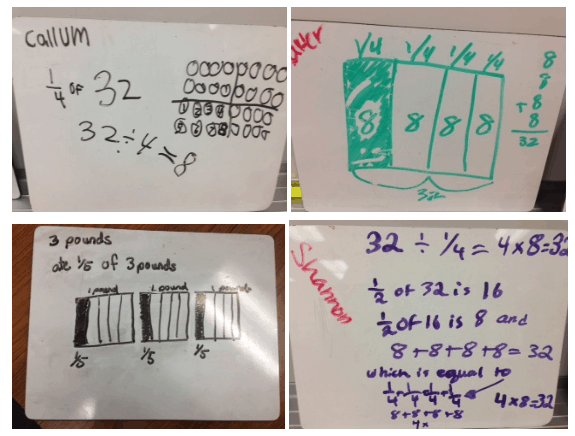As a fifth grade teacher, I’m in charge of ensuring all my students are prepared for math in middle school and beyond. It’s a big responsibility, which is why I willingly spent countless hours with my teammates over the last two years, designing our own math units. Relying on well known sources such as Illustrative Math, the Digital Library, and Engage New York, my colleagues and I painstakingly pieced together a curriculum that would address the full depth of our state’s math standards.
This year was different, however. I was elated that our staff (kindergarten through fifth grade) was ready to commit to using a single curriculum: Everyday Math. I strongly believed that following a California Common Core-approved curriculum would ensure I covered all the standards with a strong emphasis on Coherence, Focus, and Rigor. Because of this, I was ready to let go of the detailed unit plans, routines, problem solving pages, and quick checks I had previously poured my heart and mind into.
Meeting My New Curriculum — Identifying Strengths and Weaknesses
In August, prior to the year starting, we turned to EdReports’ recent review of Everyday Math and in one afternoon I began to understand the strengths and weaknesses within the fifth grade curriculum I would now be teaching. While it met expectations in the area of Focus, it only partially met the criteria in Coherence and fell short in the areas of Rigor and Mathematical Practices.
Many of the deficits were in attending to the Mathematical Practices, using tools and mathematical models strategically, critiquing the reasoning of other students, and the correct use of vocabulary throughout the materials. Everyday Math directs students to use specific tools and guides teachers to deliver explicit directions, deterring students from making sense of a problem on their own or making their own decisions about using tools strategically. Many of the Math Master worksheets dictate what model students should use instead of encouraging flexibility with numbers and strategies. In addition, many mathematical terms are replaced with vocabulary terms unique to Everyday Math, terms students won’t encounter in the real world. For example, the curriculum consistently uses number sentence instead of equation, turn-around fact in place of commutative property, and name-collection box when referring to renaming an equivalent number, decimal, fraction, and/or equation.
Armed with this information, it became easy to identify the shortcomings in each unit and within the daily lessons. The time I spent in previous years unpacking the standards and analyzing students’ understanding prepared me to make minor adjustments in order to ensure that students were engaging in rigorous problem-solving tasks while intentionally attending to the eight mathematical practices.
Making Changes to Curriculum
To address the identified shortcomings, I made simple, but deliberate tweaks included utilizing correct vocabulary terms during my math instruction and student share-outs, and correcting vocabulary on workbook pages and tests.
In Unit 2: Whole Number Place Value and Operations as well as Unit 3: Fraction Concepts, Addition, and Subtraction, I choose not to focus on the U.S. Standard Traditional Algorithm, which is stated in the teacher’s instruction and the students’ workbook pages. Instead, I ask students to use the strategies that make sense to them. I instruct students to read directions, cross out “use the U.S. Standard Traditional Algorithm to solve,” and replace it with “use a strategy to solve.” Some students did choose to use the algorithm yet many more were comfortable using an area model, friendly numbers, and partial products to solve. I strongly believe if students are not able to accurately use place-value strategies modeled with an area model, they do not have the conceptual prerequisite knowledge required to move to an algorithm.

My goal was for students to develop and extend their number sense, mathematical reasoning skills, and their ability to articulate their thought process. By ensuring students use correct mathematical terms early on, they have been much more attentive to using accurate language when sharing out their math thinking and strategies with the class. Now when my students see words such as “number sentence” or “name box” they automatically cross it out and write in “equation” or “rename.”
Rich problem-solving tasks — which my team has either written ourselves or borrowed from Illustrative Math and books such as Extending Children’s Mathematics: Fractions and Decimals and Number Talks: Helping Children Build Mental Math and Computation Strategies — have been incorporated on days when Everyday Math problem solving is weak. In a traditional day, students begin with a mental routine or warm up. This leads to our problem solving task, in which students spend 15 to 20 minutes making sense of a problem and solving it multiple ways. Students often use trial and error to determine which strategy makes the most sense; by trying a variety of number sets, they ensure their thought processes work. After adequate time, we come together in a “rainbow,” where students pull up chairs into a semicircle focused around the whiteboard.

Individual students share out their process while I chart their process. This is a time for collaborative questioning, clarification, and restating to ensure everyone is tuned in to the student. Our daily math workshop concludes with independent practice to ensure students are exposed to procedural and fluency practice on a daily basis.
To see more reviews from EdReports, visit www.edreports.org


















